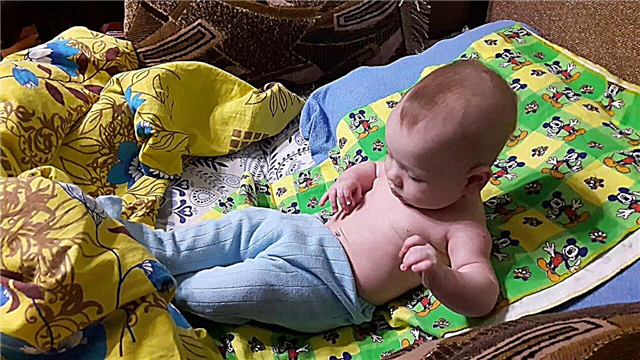
Diseases of the gallbladder occur in babies with a variety of symptoms. One of these pathologies is cholecystitis.

What it is?
Inflammation of the inner wall of the gallbladder is called cholecystitis. This pathology can develop at any age. In children, cholecystitis is accompanied by the development of numerous symptoms associated with indigestion.
Quite rarely, only the inner wall of the gallbladder is involved in the inflammatory process. Much more often, inflammation also goes to the biliary tract. Such pathologies are most often found in children's practice. This feature in children is due to the anatomical proximity of all internal organs.


According to statistics, chronic forms of this disease are much more common in children. Acute and purulent variants are recorded in children's practice much less often. In some cases, the course of the disease may be latent. In this situation, no adverse symptoms of pathology appear.
Usually, a worsening of the disease occurs when the diet is disturbed or the course of the disease worsens.
A variety of causal factors lead to the development of the disease. Some types of bacteria can cause severe inflammation, which quickly leads to the spread of the inflammatory process along all biliary tract. The most common causes of the disease include lamblia and helminthic infection.


Secondary foci of infection also contribute to the development of inflammation in the gallbladder. Chronic tonsillitis caused by bacterial flora, if untreated, can lead to adverse symptoms of cholecystitis in a child.
The consequences of appendicitis, gastritis, scarlet fever or flu can also lead to the spread of inflammation to the organs of the gastrointestinal tract.
Kinds
Depending on the time of the onset of adverse symptoms of the disease, all clinical variants of the disease are divided into acute and chronic. The first reported illness is called the acute form. This clinical variant is quite often recorded in children from 8 to 13 years old.


Acute cholecystitis is accompanied by an increase in blood levels of lysolecithin. With functional blockage of the gallbladder, its content increases many times. This clinical condition contributes to severe damage to the mucous membrane of the inflamed organ. Such violations cause severe aseptic inflammation in a sick child.
With the course of acute cholecystitis, the blood supply in the damaged organ is disrupted as a result of severe biliary hypertension. Prolonged stagnation of blood contributes to an increase in the size of the gallbladder, which leads to the appearance of specific symptoms of the disease in the child.


The chronic form of the disease is accompanied by the alternation of several periods of remission and exacerbations. This variant of the disease can be purulent and catarrhal. The appearance of pus is the most unfavorable symptom. To eliminate the symptoms of purulent cholecystitis, the appointment of antibacterial drugs is required, as well as more intensive treatment.


An unfavorable course of chronic purulent inflammation of the inner wall of the gallbladder can lead to the appearance of various abscesses. In this clinical situation, the pus formed in the primary focus can spread to adjacent internal organs.
Purulent abscesses are difficult to diagnose, and treatment is carried out only in a hospital setting.
Symptoms
The severity of adverse clinical signs can vary. Younger babies can tolerate an exacerbation of chronic cholecystitis much more difficult. The increase in symptoms usually occurs within the first few hours after the onset of the acute period of the disease.
The most common clinical sign of this disease is the appearance of strong bitterness in the mouth. Usually, this symptom worsens or appears after eating fatty and fried foods. The tongue of a sick child is usually coated with a white or yellowish coating. Babies complain of a lack or decrease in appetite.


Vomiting or nausea are also fairly common symptoms that occur during an exacerbation of cholecystitis. Stool is disturbed in children. Quite often, this clinical sign is manifested by persistent constipation, which occurs due to insufficient flow of bile, which is necessary for proper digestion.
Abdominal pain is a classic symptom that accompanies this disease. The intensity of the pain syndrome can be different.
Some babies feel only heaviness in the right hypochondrium. The intensity of the pain syndrome increases after an error in the diet and the abuse of fatty foods. In some cases, soreness can spread from the right hypochondrium to the one-sided arm and under the scapula.


The duration of the pain syndrome can be different. On average, it ranges from 5-15 minutes to several hours. Sick babies note the relationship between the onset of pain and the use of fatty and fried foods. The nature of the pain syndrome is usually aching, pulling.
During the acute period of the disease, the child's soreness increases in the area of the right hypochondrium. This symptom is aggravated by pressure in this area. In some cases, the tension of the abdominal wall increases in the abdomen. This pathological tension arises as a manifestation of a protective response to severe inflammation.


The latent form of the disease does not appear for a long time. The first symptoms of the disease can develop only several years after the onset of the disease. Constant errors in the diet only contribute to the active progression of the disease. Before the onset of a painful attack, the baby noticeably increases nausea and a feeling of heaviness in the area of the right hypochondrium.
In adolescence, a sick child also develops concomitant symptoms of liver damage. As a rule, these clinical signs are manifested by yellowing of the skin.

With a pronounced violation of the outflow of bile, the child may develop persistent itching, which brings the child severe anxiety and discomfort.
Diagnostics
Taking an anamnesis plays an important role in establishing the correct diagnosis. To clarify the degree of damage to internal organs, a clinical examination with mandatory palpation of the projection of the gallbladder is required. During such a study, the doctor can establish specific symptoms that occur when this organ is damaged.
During the period of exacerbation of the disease, laboratory tests are very informative. They help doctors determine the severity of functional disorders.

With inflammation of the gallbladder, the amount of total bilirubin in the blood increases. His factions are also changing.
Carrying out instrumental studies in establishing a diagnosis is also necessary. To establish a diagnosis, doctors prescribe an ultrasound examination of the abdominal organs. Thickening of the inner wall of the gallbladder and signs of stagnation of bile in it indicate the presence of signs of cholecystitis in the child.
Treatment
Various medications are used to treat the acute period of the disease. The treatment regimen is determined by the attending physician. Both a pediatrician and a pediatric gastroenterologist can treat acute or chronic cholecystitis. To detect this disease in babies, a mandatory clinical examination is carried out, which allows for sufficient control over the development of the disease.

Nutritional therapy in the treatment of cholecystitis plays the most important role. In the diet of sick babies, all fatty and fried foods are limited. Polyunsaturated fat molecules are used as fats. They are usually found in unrefined vegetable oils and red fish.
All refined fats, as well as frying, are strictly excluded.


A baby suffering from cholecystitis should eat at least 5-6 times a day in small portions. The amount of food should not exceed the age limit. The daily calorie content must also be strictly observed. The basis of the diet should be high-quality protein products and cereals. Food should be supplemented with fruits and vegetables containing a sufficient amount of vegetable fiber.
Doctors recommend the acute period of the disease in bed. Compliance with bed rest will prevent the development of dangerous complications in the future. Eliminate unfavorable symptoms in bacterial purulent forms of cholecystitis is possible only with the help of medicinal antibacterial drugs.
As such drugs, drugs are used based on penicillin, chloramphenicol, and other substances.


.
If the cause of the exacerbation of cholecystitis was giardiasis infection, then in this case, specific drugs based on aminoquinol and furazolidone are prescribed. Age dosages of these funds are selected by the attending physician. To eliminate adverse symptoms, a course application is required.
Symptomatic therapy includes the appointment of choleretic drugs. They can be represented by both herbal and pharmaceutical drugs. Decoctions made from oats, bearberry, corn stigmas are suitable for babies. Various physiotherapy procedures will be able to consolidate the positive effect.


These include ozotokerite therapy, UHF treatment, paraffin therapy, and diathermy.
For more information on cholecystitis, learn from Dr. Komarovsky by watching the following video.



